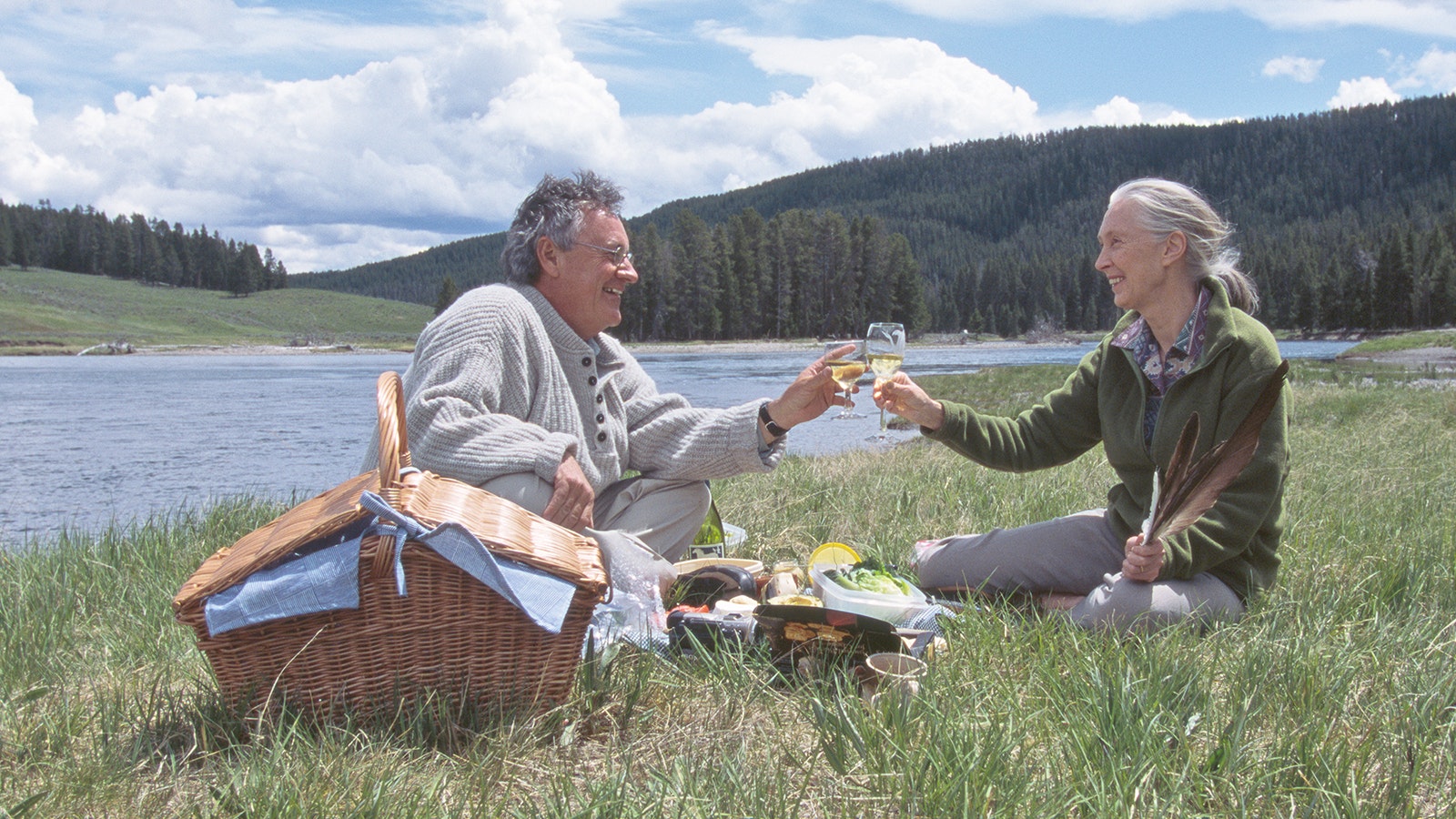The death of a 43-year-old man who spent days repeatedly climbing up and down Snow King Mountain in a test of endurance and athleticism is drawing renewed attention, and scrutiny, on an increasingly popular climbing trend called “Everesting.”
Slava Leykind died July 2 at Eastern Idaho Regional Medical Center in Idaho Falls, Idaho, while attempting his Everesting challenge, which is trying to climb the equivalent of Mount Everest in 36 hours.
Everesting is an endurance challenge where people repeatedly summit the same mountain to achieve the same vertical distance needed to summit Mount Everest, the world’s tallest mountain at 29,029 feet. Leykind’s obituary says he died “from complications sustained while participating in a mountain endurance event earlier that week.”
The Jackson Hole event requires people to climb Snow King Mountain’s steep 1,500 feet of elevation 19 times.
Everesting isn’t nearly as daunting or expensive as an actual summit of Mount Everest, but that doesn’t mean it’s free of risk. Experienced mountaineers see Everesting as an ambitiously athletic event that requires training and self-awareness to ensure one’s safety.
“It's no surprise that you're going to see a few people who get sick or die from this, because it is pushing your body to the limit,” said Mark Jenkins, a Laramie-based mountaineer who climbed Mount Everest twice, in 1986 and 2012. “I'm sure people get overly enthusiastic about the idea, without recognizing that you need several months of training to do it successfully, without beating up or killing yourself."
A Sort-Of Summit
This year’s 29029 Everesting challenge at Snow King Mountain happened from June 26-29. The organization's website says Snow King is “the steepest 29029 challenge” of the several it offers throughout the nation with a vertical gain of 1,500 feet.
Participants had 36 hours to complete 19 ascents, hiking to the summit before taking the gondola back to the foot of the mountain to do it again. Leykind completed six ascents before requiring medical attention for the condition that ultimately led to his death July 2.
29029 Everesting did not release a statement after Leykind’s death but did send a text message to the other participants at Snow King Mountain, according to the Jackson Hole News&Guide.
“Today is an incredibly sad day for our community, as a Jackson Hole participant has passed away,” the message read.
Neither 29029 Everesting nor Snow King Mountain Resort was available for comment.
An Intense Challenge
Jenkins said an Everesting challenge isn’t anything like an actual summit of Mount Everest. He described it as a way for non-mountaineers to get “a hardcore experience” that doesn’t mimic the real experience.
“You typically spend six weeks on Everest, while these things are usually done in a day or two,” he said. “It's kind of a gimmick, but I can imagine people being into it.”
That said, while Everesting might not be the same test of ultimate endurance as an actual Everest ascent, Jenkins still sees it as an intense physical challenge. You might not need oxygen or a sherpa to complete it, but it will still put enormous strain on the human body.
“Unless you’re a well-trained mountain athlete, it’s going to be a lot harder than people imagine,” he said. “Even if you’re climbing a 1,000-foot mountain, you have to climb it 29 times.”
Jenkins compared the challenge to the Tour De France bicycle race. A good day for a Tour De France participant, “the strongest and most aerobic athletes in the world,” is an ascent of 5,000 to 10,000 feet. Participants in an Everesting challenge must hike at least 806 feet every hour to complete it in 36 hours.
Setting aside the physical strain of that many vertical ascents, Jenkins believes many people underestimate the impact of the altitude gain.
Leykind traveled to Jackson for the challenge, but lived with his family in Fairfield, Connecticut, a much lower altitude than northwest Wyoming.
“Altitude change is a huge thing for most people,” he said. “The Grand Teton rises from 7,000 feet to 13,500 feet. That’s a 7,000-foot gain, and you’d need to do that four times for an Everesting challenge.”

Imbalances
The Teton County Coroner’s Office confirmed that Leykind died of “an electrolyte imbalance causing cardiac arrest.” This condition is called hyponatremia, which can be caused by anything from underlying medical conditions to drinking too much water.
There have been several studies of hyponatremia manifesting as a symptom of high-altitude related illnesses, but also from high-endurance sporting events. Hyponatremia is one of the many serious medical conditions that can occur at high altitudes.
“You never use oxygen unless you're injured, you have high altitude pulmonary or cerebral edema, or just a bad case of acute mountain sickness,” Jenkins said. “Everesting voids that whole issue of oxygen. You're just going up and down and doing your darndest to do it in time.”
Jenkins believes oxygen or any other gas can be used as a crutch for inexperienced climbers to summit the world’s highest peaks, including Mount Everest.
He believes that summiting Everest without oxygen is what separates true mountaineers from "trophy hunters" and untrained amateurs who seek the prestige of climbing the world's tallest mountain.
Oxygen isn’t needed to summit any of the peaks in the Teton Range, but that doesn’t mean people are immune to the symptoms of altitude sickness. That’s why Jenkins believes people motivated to complete an Everesting challenge need training and self-awareness.
“People don’t just go out and run marathons,” he said. “They train for them. They start with some 5Ks, then 10Ks, then 10-milers, then some half-marathons. Then they see if they can do the big one. I think the same sort of thing would be true for one of these Everesting challenges.”
Pushing To The Limit
The allure of completing an Everesting challenge may stem from pushing people to their physical and mental limits. Jenkins thinks that’s a perfectly fine goal for some people, but not everybody.
“That might be true for professional athletes — people who are paid to be superstars — but for most people, just a notch down from the limit is certainly enough to know what you can take and what you can't take. You don't have to go over the edge and hurt or kill yourself,” he said.
Jenkins wishes more mountaineers and athletes, amateur and professional, were more aware of their limitations and willing to heed them. If at first you don’t succeed, try again — and find out what needs to be done to improve.
“People on Everest get summit fever,” he said. “They insist that they've got to do it and then die trying. But think about it this way: going to Everest now costs $50,000 to $100,000, you're gone for two months, and the chances of succeeding are less than 50%.”
Everesting challenges aren't inherently dangerous. Leykind's death was tragic, but more than 180 people successfully completed the Snow King Mountain challenge within the 36-hour limit.
While being broadly supportive of Everesting challenges, Jenkins hopes more people recognize and accept their limitations before committing to one. They’re only dangerous to people who overestimate their abilities.
“You see people run, swim, and do things beyond their capabilities and die all the time,” he said. “Do it three times, then five or six times, and see how you feel. That’s just sensible training for a hard objective. If you're trying your best and you can't do it, you gave your all. Don’t sweat it.”
Andrew Rossi can be reached at arossi@cowboystatedaily.com.








